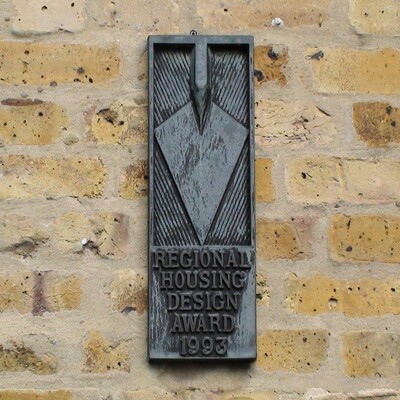Erection date: /5/2011
Building designed by: Joseph Paxton
First large scale prefabricated glass and iron building
Organised by: the Royal Commission for the Exhibition of 1851
First world exposition of: innovation, technology and design
Supported by: HRH Prince Albert
The Great Exhibition of the works of industry of all nations & Crystal Palace building
Hyde Park 1851
Site: Great Exhibition - Hyde Park - entrance (1 memorial)
SW7, South Carriage Drive
The information board you can see in the photo has a plan showing the location of the 5 different plaques that commemorate the Great Exhibition; all laid into the ground, 4 at the 4 corners of the building: NW, NE, SE, and SW, and this one, in the middle of the southern facade where the entrance was. These plaques and the information board are a permanent public art project by the artist Virginia Nimarkoh, unveiled in May 2011. The text on the board reads:
The Great Exhibition 1851, Hyde Park
This is the site of the Great Exhibition of 1851. It was the first world exhibition of design, technology and innovation, displaying exhibits from Britain, the British Empire and the rest of the world.
For the first time, the site in Hyde Park has been marked. Five recycled glass and concrete plaques now stand on the footprint and former entrance to the building. Early examples of the materials and techniques used in this project were displayed in the Great Exhibition. This public art project commemorates the 160th anniversary of the Great Exhibition.
Designed by Joseph Paxton, the Great Exhibition building was nicknamed the ‘Crystal Palace’. It was the world’s first large-scale prefabricated building. Measuring 1848ft by 108ft, the spectacular structure was built using glass and iron. From where you are standing it would have spanned roughly 924ft (281 metres) to your left and right.
The exhibition presented over 100,000 exhibits, including a black diamond from Brazil, a barometer using leeches, a prototype submarine, Smith and Wesson rifles and edible birds nests from Java. The legacy of the Great Exhibition continues to this day.
The Royal Commission for the Exhibition of 1851 staged the landmark project. The Commission continues to support research and cultural projects with the profits from the exhibition.
















Comments are provided by Facebook, please ensure you are signed in here to see them